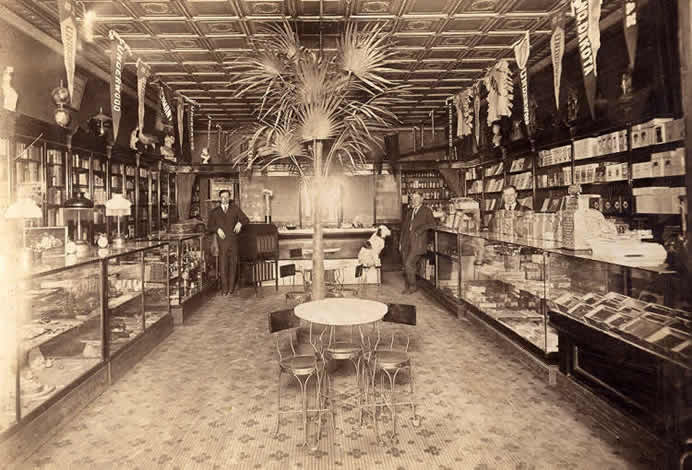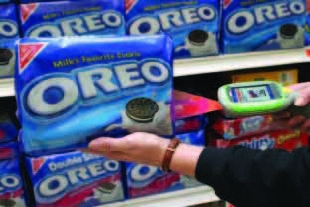Any sales manager can clearly distinguish between the sales person who understands both the customer and the wares available to offer, and efficiently matches the two, as contrasted with the order-taker, who may be affable, but simply fills an order form, with little understanding of either the customer, or possibly the merchandise being offered. The sales person facilitates the thought process that leads to closing the sale - "close early and close often" - while the order taker plays a more passive role.
In understanding what needs to happen in shopping, and is happening, among retailers and brand suppliers that want to sell, it is helpful to review how the industry at large became so passive (order-taking) in managing the sales process. What is common on the selling room floor today (passivity,) was not always this way.
One hundred years ago, retailers tended to play a far more active role in selling to their customers.

This was in the days before self-service, and personal selling was the rule. Of course, self service introduced massive efficiencies to retailing that benefited shoppers, retailers and their suppliers. In the place of personal selling, a vast commercial machine was created that relied on mass advertising to replace the "personal" element of the sales process. Within the stores themselves, the whole concept required shoppers to largely be responsible for "selling" themselves.
Now there is great interest in thinking of shoppers in the store as an "audience," to take the place - at least partially - of the mass audience of television, that has become so fragmented. Unfortunately, what was lost 100 years ago - the "personal" in selling - is given short shrift in returning to the store. Instead, there is underway a laborious effort to adapt the commercial communication machine to the in-store experience. This is a ham-handed and less than effective approach, driven in part by a failure to recognize what was lost 100 years ago, coupled with the fact that probably few people in the enterprise have any real personal selling skills today.
However, there are real opportunities to developing winning retail and supplier organizations based on personal selling principles. We will first consider the inexorable force of technology on the selling process. But it would be VERY wrong to consider that this is all about technology. The personal seller will always thrive, whatever the tools at hand
If you consider the actual elements of the selling process, online retailing has become far more like the historical, traditional, personal selling than is the typical offline in-store experience. When you show up at your favorite online stores you are immediately greeted by name, and ushered immediately into the store's best space for you - the opening screen. Moreover, knowing you quite well, the online merchant immediately offers you merchandise, based on your past browsing and purchasing, that you are likely interested in. (OK, some of them are still dumber than dirt. :>) And the path to completing the sale is short! One click, two or three. The first rule of personal selling is: close early and close often.
I hope you will not dismiss my assertion that online retailing is showing the way. This doesn't mean that retailing is going to become all about online. Real retailing is always about personal selling. The people who ended up owning the stores and merchandise over the past 100 years are more merchants than retailers - retailing moved to the television. OK, now I know I am straining some of you, but this is important.
We already see the advance guard of online moving into the store. One of the best of these is the Modiv Shopper, a handheld device that you grab as you come into the store. The device allows a

two way personal communication between the shopper and the retailer, very much like online, but so much better than online because the shopper is immersed in the offline retail store with the merchandise all around them. This means that as the retailer makes relevant offers, at the right time and place ("close early and close often") the shopper can complete transactions, even scanning and bagging the items. The result is a much faster sale, which, if you've been paying attention, means a lot more of them!
Of course MediaCart represents a much more extensive deployment of the internet within the offline retail store, but Infosys and others are aiming for wider, lighter deployment, such as with the shopper's mobile phone. (Think of the mobile phone as a "mouse" that gives you access to the cloud of communication that envelops you at nearly all times.)
Now the point of all this is not to go nuts over the internet in stores, but to recognize if people deploying technology in the stores don't learn from online retailers, they are dullards indeed. Successful online just had to get personal, really fast. So the question is, why wait for technology in order to incorporate "personal selling" into your own branding or retailing program? It's not about technology, it's about selling! There will be an upcoming Views titled "Don't Talk at All!" which may give you some ideas. :>)
Update: "The Return to Personal Selling at Retail" from the 2009 IIR Shopper Insights Keynote


